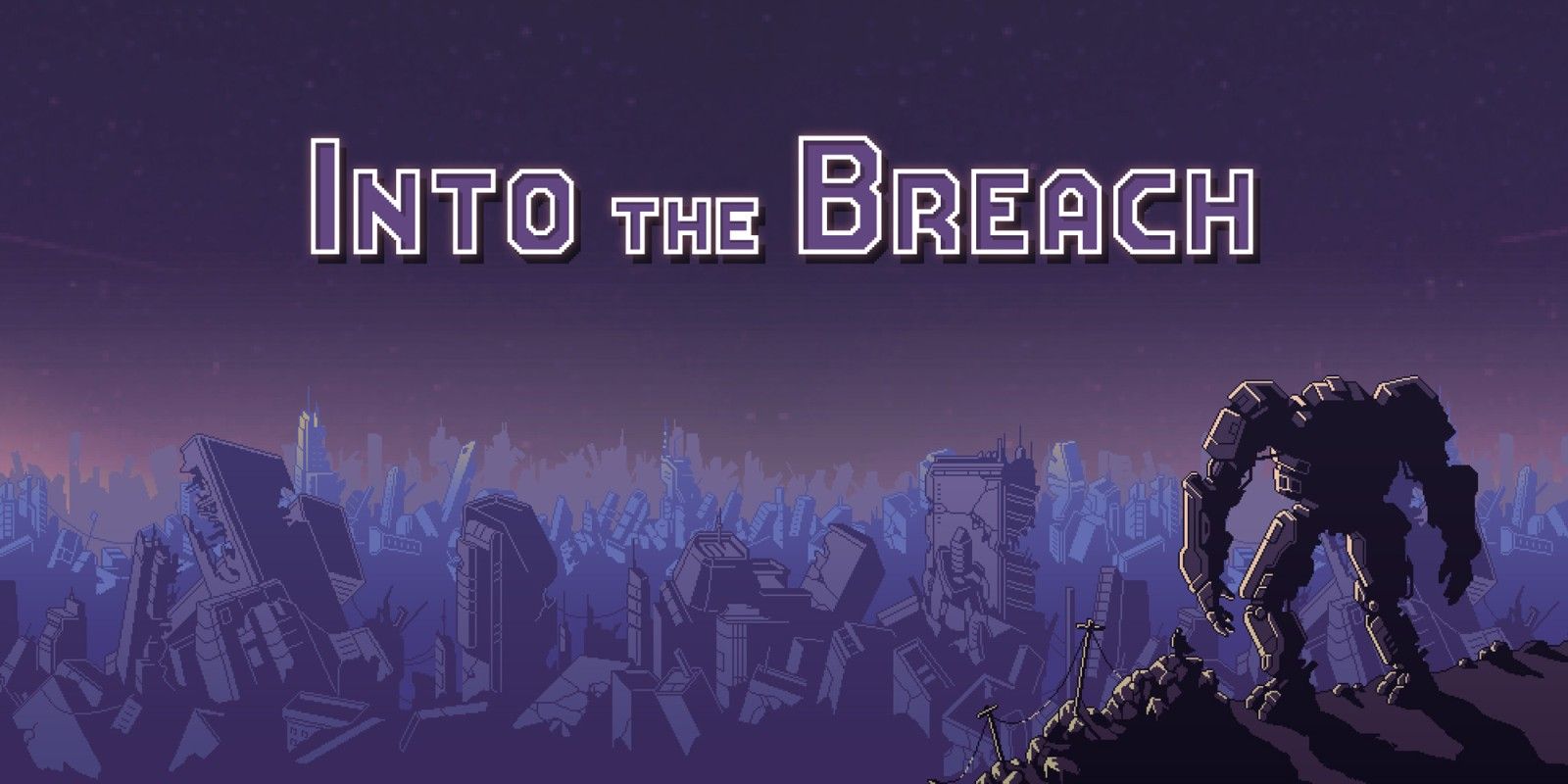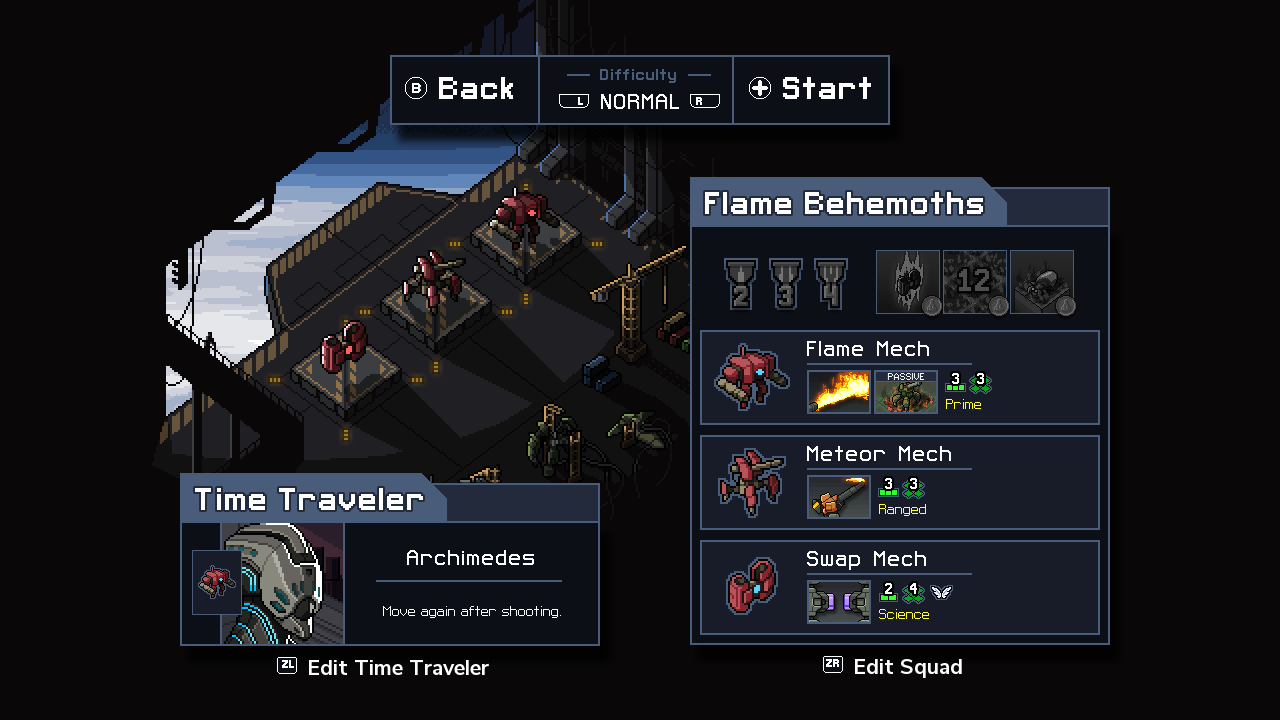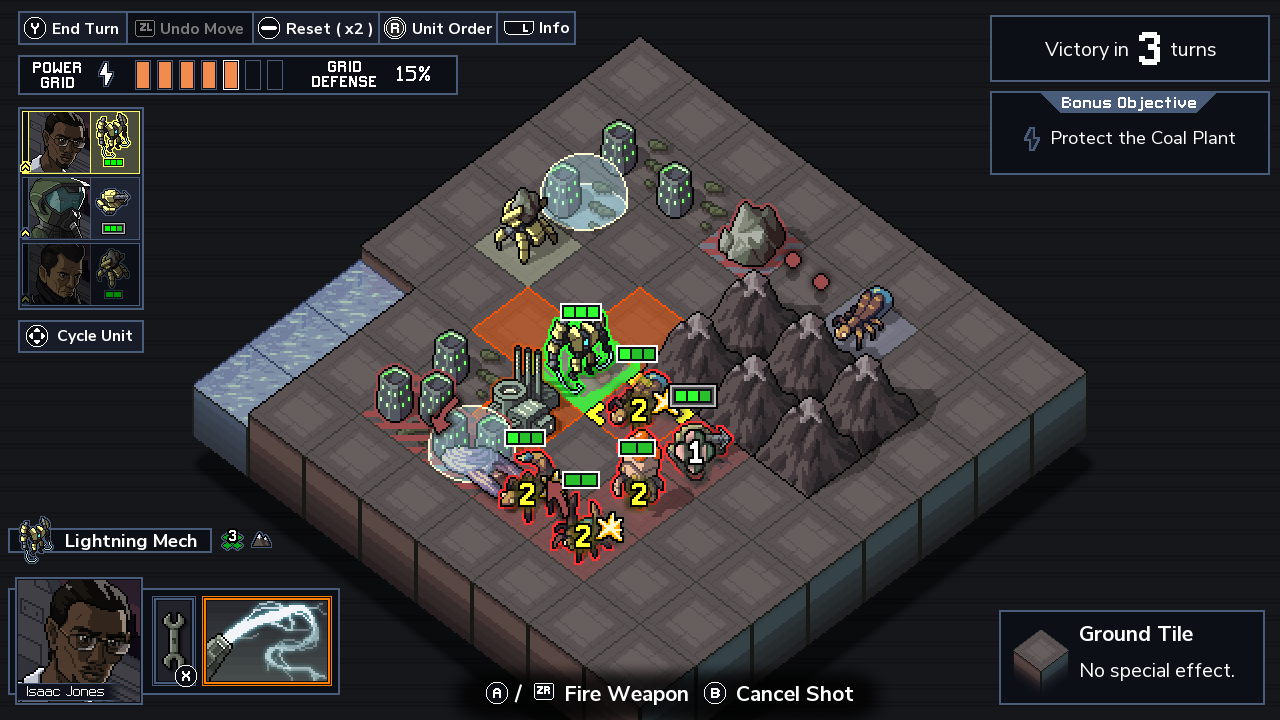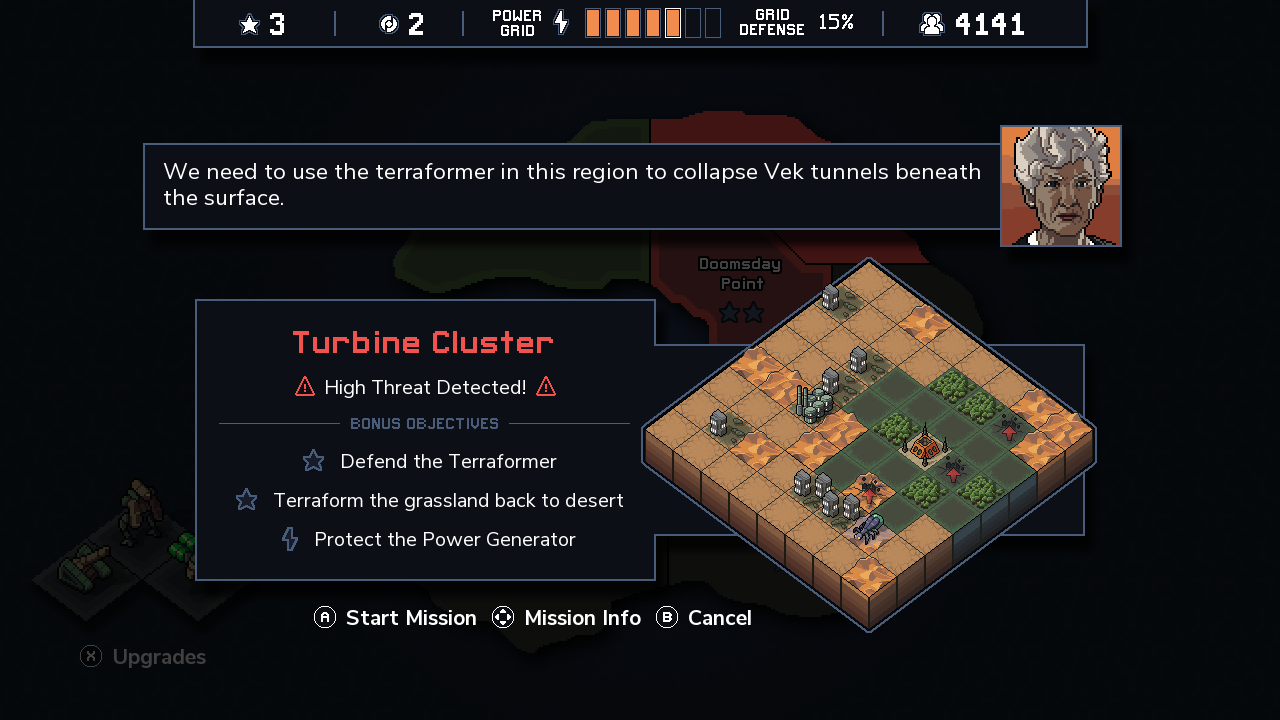
There are almost always a mere three moves to a turn of Into The Breach, but they distinguish the granular rift between masterful success and stumbling failure. That straightforward yet tenuous space living in those decisions is where the bulk of the game’s beautiful tensions lie, invoking a careful balance of sacrifice and persistent one-upsmanship on the overpowered but predictable enemy units. In its more gratifying moments, you feel like a masterful chess player stomping across the board and commanding of destiny, but it’s always a house of cards, something that may confound strategic thinkers lacking sufficient grit, or perfectionists seeking an always-immaculate resolution.
In shorthand terms, Into The Breach is a kind of take on the war tactics of Nintendo’s long-running Advance Wars and Fire Emblem franchises, but concentrated on the concept of losing the battle to win the war. Taking the role of a time-traveling trio of mech pilots, players are placed into a sequence of square 8x8 grids, upon which the villainous Vek continue their onslaught of earth’s cities and defenses. The “breach” described in the title is actually time and space, and the intention of the team is to figure out a successful way to prevent the insectoid Vek from succeeding in their mission, with battles taking place on four different islands with unique environmental conditions.
Related: The Messenger Review: A Blissful Retro Platformer
Losing in Into the Breach will inevitably occur at scale in those first few games, on the micro and macro level. That means that some civilian casualties, important structures destroyed, or non-critical mission goals failed are surmountable, but critical failure or total civilian loss is always closer than it seems. The game’s canonical reality urges players to just time-warp back and start over from the beginning in stride, perhaps with certain new mech pilots or units unlocked. Although not a roguelike in the conventional sense, Into The Breach does adhere to certain roguelike qualities, especially the path to improvement; unlockables don’t improve a player’s chances on their own, but learning the finer nuances of combat and how best to efficiently accomplish each randomized map’s goals ensures that subsequent runs get closer to success. Its overall clockwork of consequence is astoundingly well crafted at its core, and while RNG will occasionally be the main source of failure, that circumstance is thankfully rare.

No, the main reason for failure is thinking two moves ahead when it should have been four. Each individual mission (five missions per island) usually resolves in no more than four turns, and it’s not at all uncommon to leave some enemy units alive at the end. So long as their path of destruction is quelled, and friendly units and buildings are safe, chalk it up as a win. This is one of numerous ways that Into The Breach subverts the formula of tactical turn-based games, and it keeps players on the edge of their seats. Even early on, once players begin to grasp its initial intricacies, it’s not an exaggeration to expect certain turns to take ten minutes or longer, time that is spent staring at the simple gird and theorizing how the dominoes will fall. Where will this unit bump into if attacked, and will it damage friendlies? Should this mech cover an enemy spawn point at the risk of a health loss?
And still, these are only the basics. Before long, environmental dangers like acid pools, hazardous but valuable new weapon modules, and more demanding win conditions throw those projections into disarray. Absolutely nothing in the game is completely unpredictable within a given turn, but that doesn’t mean that a one-shot bolt of lightning or particularly complex enemy may appear in the next one, adding another spinning plate to keep an eye on. The end-game in particular is a claustrophobic grid of compromised moves that requires hard-fought mastery to complete, even on normal difficulty.

Into The Breach arrives to the Nintendo Switch mostly intact, with a shortcut-oriented control method that does its best to simulate the original mouse-oriented design. The real draw would’ve been a touch-screen option, something that would render the package pretty much perfect. As it is, desktop veterans of the game will probably scrape at its set of controller macros and menu eccentricities before getting properly accustomed, but it’s serviceable and becomes familiar, with time.
Additionally, there are built-in rumble features that do a surprisingly good job of improving immersion, but, otherwise, the aesthetic qualities of the game’s art and soundtrack remain a little on the plain side. It’s also worth mentioning that Into The Breach is written by the renown Chris Avellone (writer of Planescape: Torment, Star Wars: KOTOR II, and even FTL, predecessor to this game), and while the flavor text and limited dialogue serves the minimalist narrative, it’s not really what’s going to keep people playing.

That pull is going to come from each sweat-inducing choice, whether it’s risking precious damage to a building in order to save a pilot from certain death or determining which unit best benefits from a new upgrade, leaving the remaining two mechs weaker as a result. Into The Breach looks deceptively simple in screenshots, but it’s a uniquely demanding strategic experience that will consume countless hours, and having it in a portable and highly functional form on the Switch is a tactics-lover’s dream come true.
More: Morphies Law Review: Not-So-Mighty Morphin
Into The Breach is out now on the Nintendo Switch eShop for $14.99. A digital copy for Switch was provided to Screen Rant for purposes of review.
from ScreenRant - Feed https://ift.tt/2wAqQoP

No comments:
Post a Comment